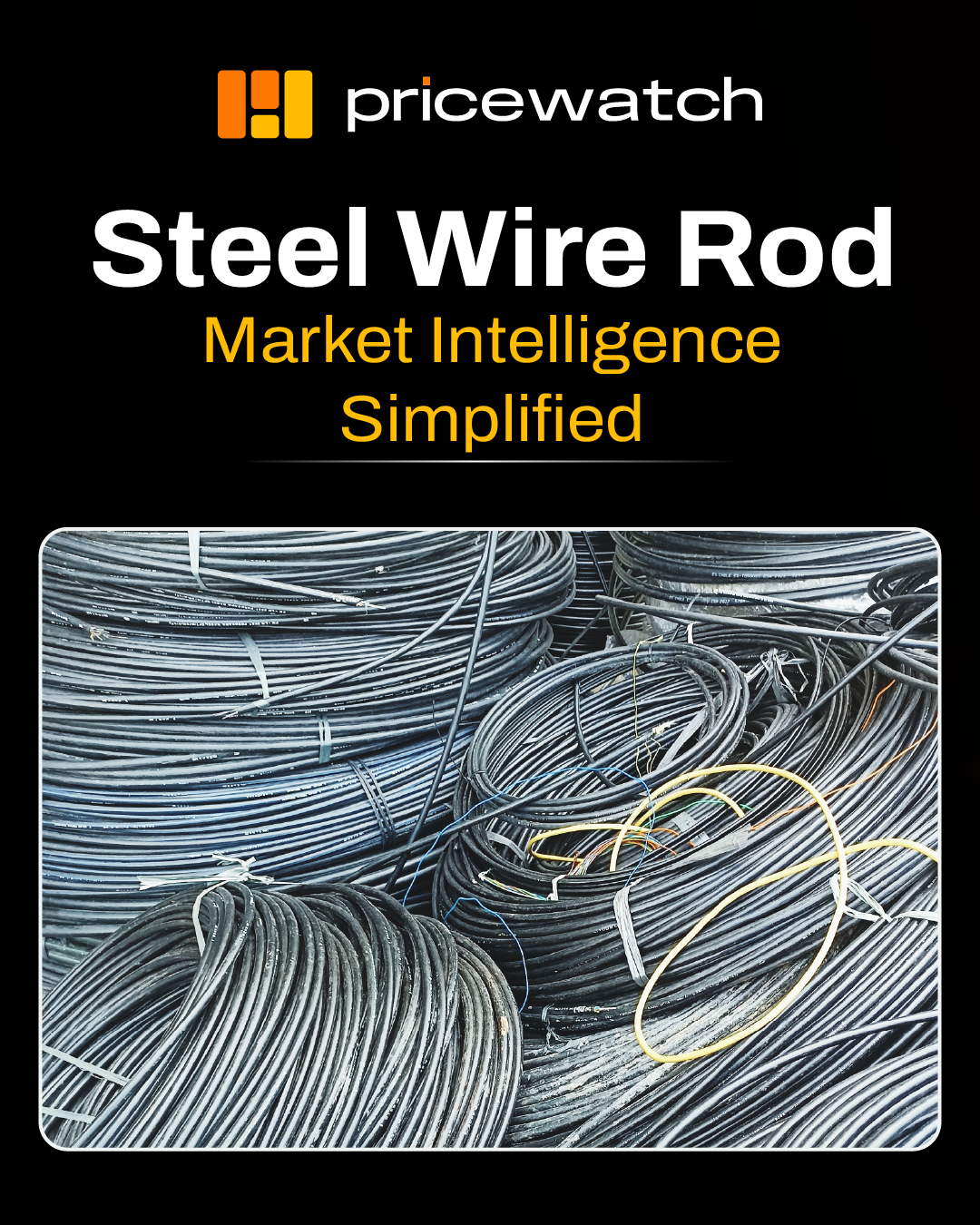Steel wire rod is one of those materials that may not be talked about often, but it plays a vital role in many industries we depend on every day. From construction to automotive parts, fences to fasteners, wire rods are essential building blocks. When prices of steel wire rod change, they ripple across several sectors, affecting the cost of construction, manufacturing, and infrastructure development.
According to PriceWatch, the global wire rod market in Q2 2025 experienced mixed trends. While steel wire rod prices in China dropped due to weak demand and high inventories, the United Kingdom saw stable to slightly lower prices, and the United States witnessed a steady price increase.
Let’s break it down in simple, everyday language so you can understand what happened, why it happened, and what it might mean moving forward.
🧱 What Is Steel Wire Rod and Why Is It Important?
Before diving into prices, it helps to know what wire rod actually is. Steel wire rod is a thin, round steel product typically supplied in coils. It’s used to make things like:
-
Nails, bolts, and screws
-
Mesh for construction
-
Springs and automotive components
-
Fencing and wire cables
Since it’s a base material for so many products, any change in its price can impact various industries especially construction, manufacturing, and infrastructure.
📉 China: Wire Rod Prices Declined by 1.16%
-
Q1 2025 Price: $517 per metric tonne
-
Q2 2025 Price: $511 per metric tonne
-
Change: ▼ 1.16%
🔍 Why Did Prices Go Down?
In Q2 2025, the Chinese wire rod market faced a number of challenges:
-
Oversupply
Steel mills in China continued to produce wire rods at high levels, even though demand was not keeping up. This created more supply than the market needed, which naturally pushed prices down. -
Weak Construction and Manufacturing Demand
Construction activity didn’t bounce back as expected after the Chinese New Year. Manufacturing, another big consumer of wire rod, also remained slow. This meant fewer buyers in the market. -
High Inventory Levels
Because of slow demand, mills and warehouses were holding on to large amounts of unsold stock. To clear these inventories, producers had to offer lower prices. -
Tough Export Conditions
Chinese wire rod exporters faced stiff competition from Southeast Asian suppliers who were offering better deals. Add to that ongoing global trade tensions, and Chinese producers found it hard to push their products into international markets.
For latest updates, price queries, demand forecasts, and supplier information related to Steel Wire Rod prices, submit your request here: https://www.price-watch.ai/contact/
📉 Overall Outlook in China:
While there were some government efforts to stimulate the economy especially infrastructure those measures didn’t lead to a quick boost in demand. The wire rod market in China remained subdued and under price pressure throughout the quarter.
United Kingdom: Prices Remained Flat, Slight Dip of 0.14%
-
Q1 2025 Price: (Not specifically given, assumed around stable levels)
-
Q2 2025 Price Change: ▼ 0.14%
🔍 What Happened in the UK?
The UK market was, in a word, quiet. Prices remained almost unchanged during the quarter.
-
Stable but Subdued Demand
Demand from construction and manufacturing held steady, but there wasn’t much growth. No major projects kicked off, and no significant uptick in production was seen either. -
Economic Uncertainty
With uncertainty around the UK economy and European markets, buyers stayed cautious. They bought only what they needed, with little sign of restocking or bulk buying. -
Limited Import Competition
UK producers were protected from cheaper imports thanks to trade policies and regulatory barriers. This gave them some breathing room to keep prices stable, even with slow demand. -
Tight Supply Control
Mills did a good job of controlling production levels. This helped prevent oversupply and kept the market balanced.
📉 Overall Outlook in the UK:
There wasn’t much excitement in the UK wire rod market. Prices were steady with a slight dip, and the market remained cautious. Everyone from producers to buyers is waiting to see how the broader economy shapes up.
🇺🇸 United States: Wire Rod Prices Rose by 1.61%
-
Q2 2025 Price Change: ▲ 1.61%
🔍 Why Did Prices Increase?
The U.S. market continued to show strength in Q2 2025. Several factors supported the upward price movement:
-
Strong End-User Demand
Wire rod is widely used in construction, automotive, and manufacturing all of which performed well during the quarter. Infrastructure projects also played a big part in boosting demand. -
Infrastructure Projects
The U.S. government’s continued investment in rebuilding roads, bridges, and public systems meant steady demand for steel products like wire rod. -
Trade Protections
Ongoing tariffs and trade restrictions helped protect domestic wire rod producers from overseas competition. This allowed them to raise prices without worrying too much about being undercut. -
Higher Raw Material Costs
The cost of making steel especially from scrap metal and energy went up. Mills passed these costs on to buyers. -
Strong Market Sentiment
Buyers were confident in the economic environment and willing to accept gradual price hikes, especially with steady supply conditions.
📈 Overall Outlook in the U.S.:
With strong demand, controlled imports, and rising input costs, the U.S. wire rod market remained positive and dynamic in Q2 2025. It was one of the more robust markets globally.
📊 Summary Table: Q2 2025 Wire Rod Price Trends
| Country | Price Trend | Key Drivers |
|---|---|---|
| China | ▼ 1.16% decrease | Oversupply, weak demand, export pressure |
| United Kingdom | ▼ 0.14% slight dip | Stable demand, cautious buyers, tight supply control |
| United States | ▲ 1.61% increase | Strong demand, tariffs, higher raw material costs |
🧠 Final Thoughts: A Market Moving at Different Speeds
The steel wire rod market in Q2 2025 painted a picture of three very different regions moving at their own pace:
-
China is dealing with oversupply and soft demand, with no quick turnaround in sight.
-
The UK is calm but cautious, with little movement in either direction.
-
The U.S. is seeing steady growth, supported by demand and trade policies.
For anyone in the construction, manufacturing, or steel trading industries, these trends offer useful insight:
-
If you’re buying wire rod in China, it might be a good time to secure material at lower prices.
-
In the UK, prices are stable, but keep an eye on economic signals.
-
In the U.S., expect steady but manageable price increases, especially as infrastructure spending continues.
Looking Ahead
Moving into Q3 and Q4 of 2025, the key things to watch will be:
-
Whether Chinese demand starts to recover
-
If global trade tensions ease or worsen
-
How input costs like scrap and energy behave
-
And whether major construction and manufacturing projects pick up in Europe
The steel wire rod market may not make headlines every day, but it’s a vital indicator of broader industrial health. And as Q2 2025 showed us, sometimes the story isn’t about big swings but about subtle shifts happening quietly across the globe.

